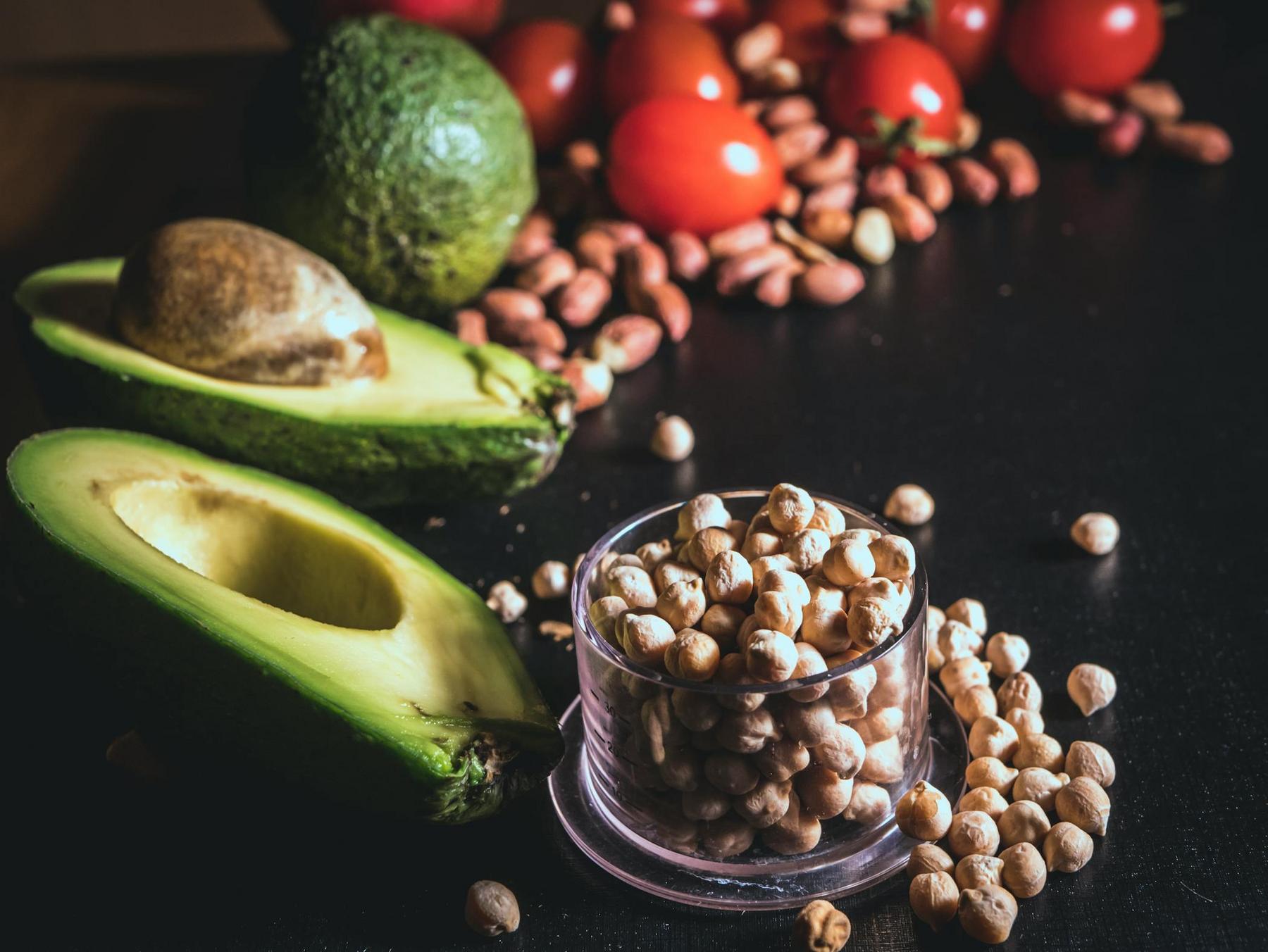For decades, dietary fats were vilified as the primary culprits behind obesity, heart disease, and various health problems. Many Australians still approach the supermarket oil aisle with confusion and trepidation, unsure whether to embrace or avoid these energy-dense nutrients. This widespread misunderstanding has led to problematic dietary choices, with surveys indicating that 83% of Australian adults fail to meet essential fatty acid recommendations, particularly for omega-3s. The truth about dietary fats is far more nuanced—and considerably more positive—than many realise. Understanding the critical role of healthy fats in balanced nutrition isn’t just about improving meals; it’s about transforming health outcomes and enhancing quality of life.
What Are Healthy Fats and Why Do We Need Them?
At their biochemical core, dietary fats are categorised by their molecular structure, which fundamentally determines their health effects. Fats are not created equal, and this distinction forms the cornerstone of modern nutritional science.
Healthy fats—primarily unsaturated fats including monounsaturated (MUFAs) and polyunsaturated fatty acids (PUFAs)—serve multiple critical functions in the human body. These fats act as more than simply energy sources; they’re integral structural components of every cell membrane, necessary for proper brain function, hormone production, and vitamin absorption.
The human body cannot synthesise essential fatty acids such as omega-3 (α-linolenic acid) and omega-6 (linoleic acid), making their dietary intake mandatory for health. These essential nutrients are fundamental to membrane integrity, eicosanoid production, and neural development. Without adequate intake, various bodily systems begin to falter, affecting everything from cognitive function to inflammatory response.
Fat-soluble vitamins (A, D, E, and K) require dietary fat for absorption and transport. Research shows that low-fat diets correlate with significantly lower serum vitamin D levels—up to 40% lower in long-term adherents. This underscores why extreme fat avoidance can lead to serious nutritional deficiencies despite otherwise adequate vitamin intake.
Beyond these physiological necessities, healthy fats enhance meal satisfaction and palatability. They stimulate cholecystokinin (CCK) secretion, increasing satiety and potentially preventing overconsumption at subsequent meals—an effect demonstrated by studies showing 23% reductions in postprandial hunger hormones following meals containing healthy fats like those found in avocados.
How Do Different Types of Fats Impact Our Health?
The health consequences of dietary fats vary dramatically based on their chemical structure and food sources. Understanding these differences is crucial for making informed nutritional choices.
Unsaturated Fats: The Heart-Healthy Options
Monounsaturated fats, predominant in olive oil (approximately 73% oleic acid), avocados, and nuts, have consistently demonstrated cardiovascular benefits. The landmark PREDIMED trial found that Mediterranean diets rich in these fats reduced major cardiovascular events by 28% compared to low-fat diets. This protection stems from their ability to improve lipid profiles, enhance endothelial function, and reduce systemic inflammation.
Polyunsaturated fats, particularly omega-3 fatty acids found in fatty fish, walnuts, and flaxseeds, offer even broader health benefits. Clinical evidence indicates that replacing just 5% of saturated fat intake with PUFAs decreases coronary heart disease risk by 25% over time. Marine-sourced omega-3s (EPA and DHA) have been shown to reduce triglycerides by 25-30% in individuals with hyperlipidaemia and significantly decrease inflammatory markers throughout the body.
DHA, a specific omega-3 fatty acid, constitutes 40% of polyunsaturated fats in neuronal membranes, highlighting its critical role in brain health. Higher omega-3 intake correlates with 26% slower cognitive decline in older populations and may offer protection against neurodegenerative conditions.
Saturated and Trans Fats: The Cautionary Tale
Conversely, saturated fats—predominant in animal products like butter, fatty meats, and full-fat dairy—show less favourable health outcomes when consumed in excess. These fats increase hepatic production of apolipoprotein B-100, a key component of LDL particles, contributing to elevated cholesterol levels and potentially increasing cardiovascular risk.
Trans fats, primarily found in partially hydrogenated oils, represent the most problematic fat category. Their consumption correlates with increased inflammation, impaired endothelial function, and elevated LDL cholesterol levels, explaining why health authorities worldwide recommend limiting intake to less than 1% of total calories.
Despite popular marketing claims, coconut oil warrants careful consideration. Containing 82% saturated fat—higher than butter (63%)—it increases LDL cholesterol by approximately 10.5 mg/dL per tablespoon consumed daily. This contradicts its portrayal as a superfood in popular media and underscores the importance of moderation.
What’s the Ideal Balance of Fats in a Healthy Diet?
Australian and international dietary guidelines have converged on recommended fat intake proportions based on extensive research. The consensus provides a framework for optimizing health outcomes while ensuring nutritional adequacy.
| Nutrient | Recommended Daily Intake (Adults) | Primary Food Sources |
|---|---|---|
| Total Fat | 20-35% of total calories | Various sources balanced across categories |
| Saturated Fat | <10% of total calories | Limit butter, fatty meats, full-fat dairy |
| Trans Fat | <1% of total calories | Avoid processed foods with hydrogenated oils |
| Omega-3 (EPA + DHA) | 250-500 mg | Fatty fish, walnuts, flaxseeds, chia seeds |
The current recommendation to maintain total fat intake between 20-35% of daily calories represents a significant shift from earlier low-fat paradigms. This range supports essential physiological functions while preventing excessive caloric intake.
The omega-6 to omega-3 ratio deserves special attention in modern diets. The optimal ratio ranges from 2:1 to 4:1, yet the average Australian’s diet features a disproportionate 8:1 ratio, contributing to increased inflammation and metabolic disorders. This imbalance stems from overconsumption of vegetable oils rich in omega-6 fatty acids coupled with insufficient intake of omega-3 sources.
For weight management, contrary to outdated nutritional dogma, moderate-fat diets (approximately 34% of calories from fat) have demonstrated superior outcomes compared to very low-fat approaches. A comprehensive meta-analysis of Nordic diet interventions found that participants consuming rapeseed oil and fatty fish achieved 4.2 kg greater weight loss than low-fat groups, accompanied by 18% reductions in visceral adipose tissue.
How Can You Incorporate More Healthy Fats Into Your Daily Meals?
Translating nutritional recommendations into practical dietary habits requires strategic approaches to food selection and preparation.
Smart Cooking Oil Selections
Choose cooking oils based on both health properties and heat tolerance. Extra-virgin olive oil serves well for low to medium-temperature cooking (up to 180°C) due to its high monounsaturated fat content and beneficial phenolic compounds. For high-heat cooking methods, high-oleic canola oil provides greater stability against thermal degradation while maintaining a healthier fat profile than traditional cooking fats.
Avoid reusing cooking oils, particularly after high-heat applications, as this increases harmful oxidation products. Store oils in dark containers away from heat and light to preserve their beneficial properties and prevent rancidity.
Regular Consumption of Omega-3-Rich Foods
To address Australia’s widespread omega-3 deficiency, incorporate:
- Fatty fish like salmon, mackerel, or sardines at least twice weekly (providing approximately 1.5-3g omega-3 per serving)
- Plant sources including walnuts, ground flaxseeds, and chia seeds daily
- Omega-3 enriched foods, which may benefit those with limited access to fresh fish
For plant-based eaters, combining 30g flaxseeds with algae-based supplements can help achieve adequate DHA levels, as conversion from plant precursors occurs at rates below 10% in humans.
Healthy Fat Swaps and Additions
Simple substitutions can dramatically improve dietary fat profiles:
- Replace butter with avocado as a spread on toast
- Choose nuts and seeds instead of processed snacks
- Use tahini or natural nut butters in place of margarine
- Add avocado to smoothies for creaminess rather than using ice cream
- Include olive oil-based dressings on salads rather than fat-free alternatives, which often contain added sugars
These practical changes offer substantial nutritional improvements without requiring dramatic dietary overhauls.
Why Has Fat Been Misunderstood in Nutritional Science?
The historical vilification of dietary fat represents one of nutrition science’s most significant overcorrections. Understanding this context helps explain current dietary recommendations and public confusion.
Early epidemiological studies in the mid-20th century identified correlations between fat consumption and cardiovascular disease, but failed to differentiate between fat types. This led to broad fat-reduction recommendations that dominated nutritional guidelines for decades.
The low-fat era (approximately 1980-2000) witnessed the proliferation of fat-free and reduced-fat products, many of which compensated for flavor loss with added sugars and refined carbohydrates. Commercial fat-free yoghurts and snacks often contain 6-12g added sugars per serving, potentially exacerbating insulin resistance and hepatic steatosis rather than improving health outcomes.
Modern nutritional science has evolved through more sophisticated research methodologies, including randomized controlled trials and metabolic ward studies. These have demonstrated that fat quality, rather than quantity, most significantly impacts health. The PREDIMED trial and similar large-scale interventions have conclusively shown that moderate-fat diets emphasizing unsaturated fats outperform low-fat approaches for most health markers.
This evolution in understanding underscores the danger of oversimplified nutritional messages and reinforces the importance of evidence-based, nuanced dietary recommendations.
The Balanced Approach to Dietary Fats
The scientific consensus today presents a clear picture: healthy fats represent an essential component of balanced nutrition, with their inclusion offering wide-ranging benefits for cardiovascular, metabolic, and cognitive health. The reconceptualization of dietary fats from metabolic antagonists to indispensable nutrients marks a significant paradigm shift in preventive medicine.
For optimal health outcomes, Australians should focus on fat quality rather than simply restricting quantity. This means deliberately choosing foods rich in monounsaturated and polyunsaturated fats while moderating saturated fat intake and minimizing consumption of artificial trans fats.
The Mediterranean dietary pattern, characterized by abundant olive oil, nuts, seeds, and fish, offers a practical and evidence-based framework for implementing these recommendations. This approach has demonstrated remarkable consistency in improving health outcomes across diverse populations and health conditions.
Future directions in nutritional research point toward increasingly personalized recommendations based on individual genetic profiles, microbiome composition, and metabolic responses. Emerging evidence suggests the gut microbiome plays a significant role in modulating fat metabolism, with certain bacterial populations enhancing PUFA absorption and utilization.
Ultimately, dietary patterns emphasizing whole foods naturally rich in healthy fats represent the most sustainable and effective approach to optimizing nutrition. Rather than fearing fat, embrace its healthier forms as valuable allies in your nutritional journey.
How much healthy fat should I consume daily?
Australian dietary guidelines recommend that total fat intake should constitute 20-35% of daily calories, with emphasis on unsaturated sources. For an average adult consuming 2,000 calories daily, this translates to approximately 44-78 grams of total fat. Within this amount, saturated fat should be limited to less than 10% of calories (about 22 grams), while trans fats should remain under 1% (approximately 2 grams). Focus on naturally fat-containing whole foods like avocados, nuts, seeds, and fatty fish while limiting processed foods high in saturated and trans fats.
Can healthy fats help with weight management?
Research demonstrates that moderate consumption of healthy fats supports weight management by enhancing satiety through the release of cholecystokinin, which may reduce overall caloric intake. Studies have shown that diets with around 34% of calories from fat often result in better long-term weight outcomes compared to very low-fat diets. The key is to incorporate healthy fats within appropriate caloric boundaries while emphasizing whole-food sources.
Which cooking oils are best for different cooking methods?
The ideal cooking oil depends on the heat level and culinary application. For high-heat cooking (stir-frying or sautéing), choose oils with high smoke points such as high-oleic sunflower or rice bran oil. For medium heat, extra virgin olive oil is an excellent choice due to its beneficial compounds. For cold applications like salad dressings, use unrefined oils such as extra virgin olive oil, flaxseed oil, or walnut oil, and avoid heating them to preserve their nutritional benefits.
Are all plant-based fats healthier than animal fats?
Not necessarily. While many plant oils rich in unsaturated fats (such as olive, avocado, and most nut oils) offer health benefits, some require careful consideration. For example, coconut oil, despite its plant origin, contains 82% saturated fat—which is higher than butter—and can significantly raise LDL cholesterol when consumed regularly. The overall health impact depends on the specific fatty acid composition and degree of processing, whether from plant or animal sources.
How can I tell if packaged foods contain unhealthy fats?
Check the ingredients list for terms like ‘partially hydrogenated oils’, ‘hydrogenated oils’, or ‘shortening’, which indicate the presence of trans fats. On nutrition labels, even products claiming ‘zero trans fats’ may contain small amounts due to labelling regulations, so consider the serving size and total intake. For saturated fats, compare the listed amount to daily recommendations and be cautious of products that list oils high in saturated fat as primary ingredients.



